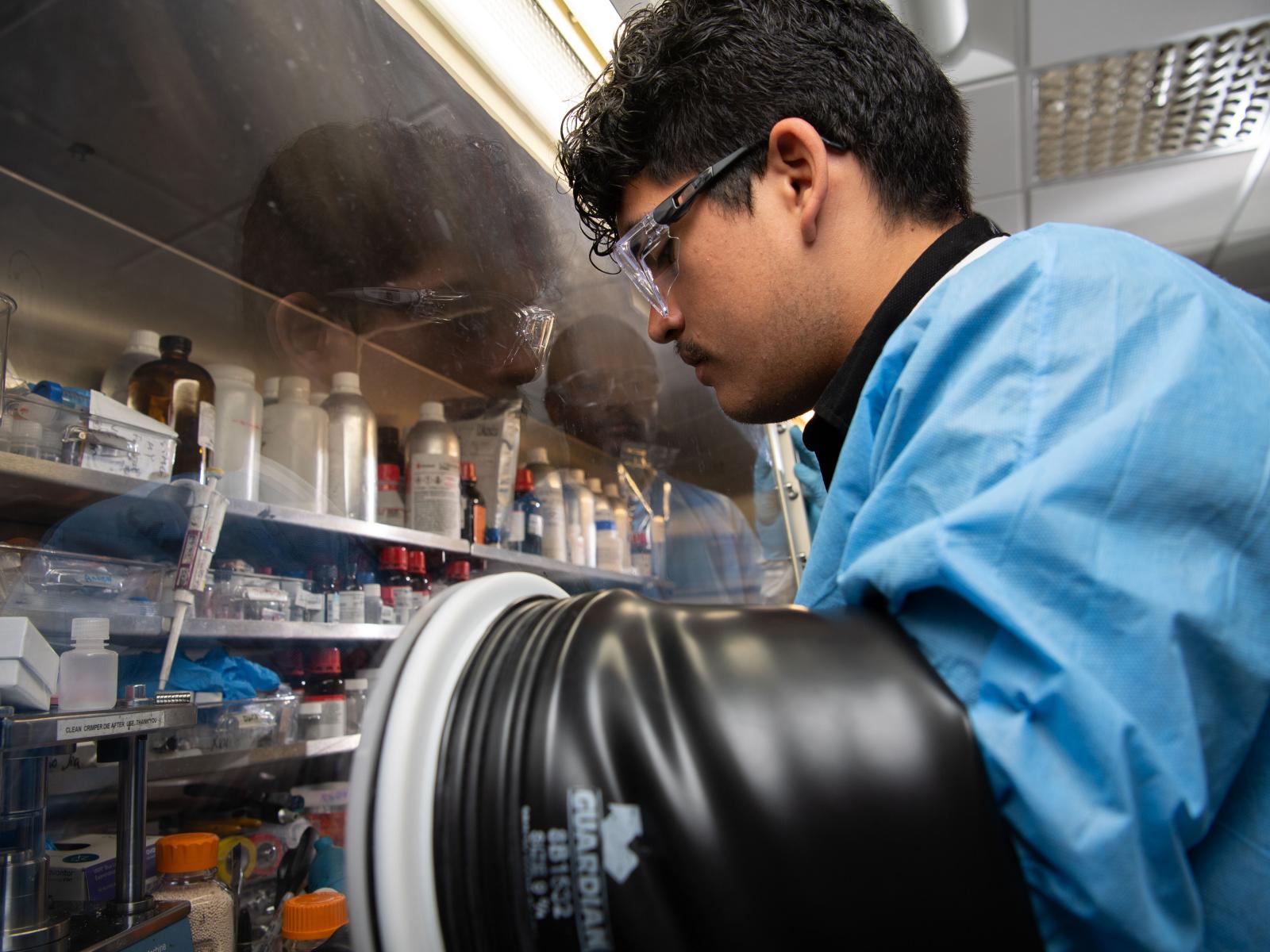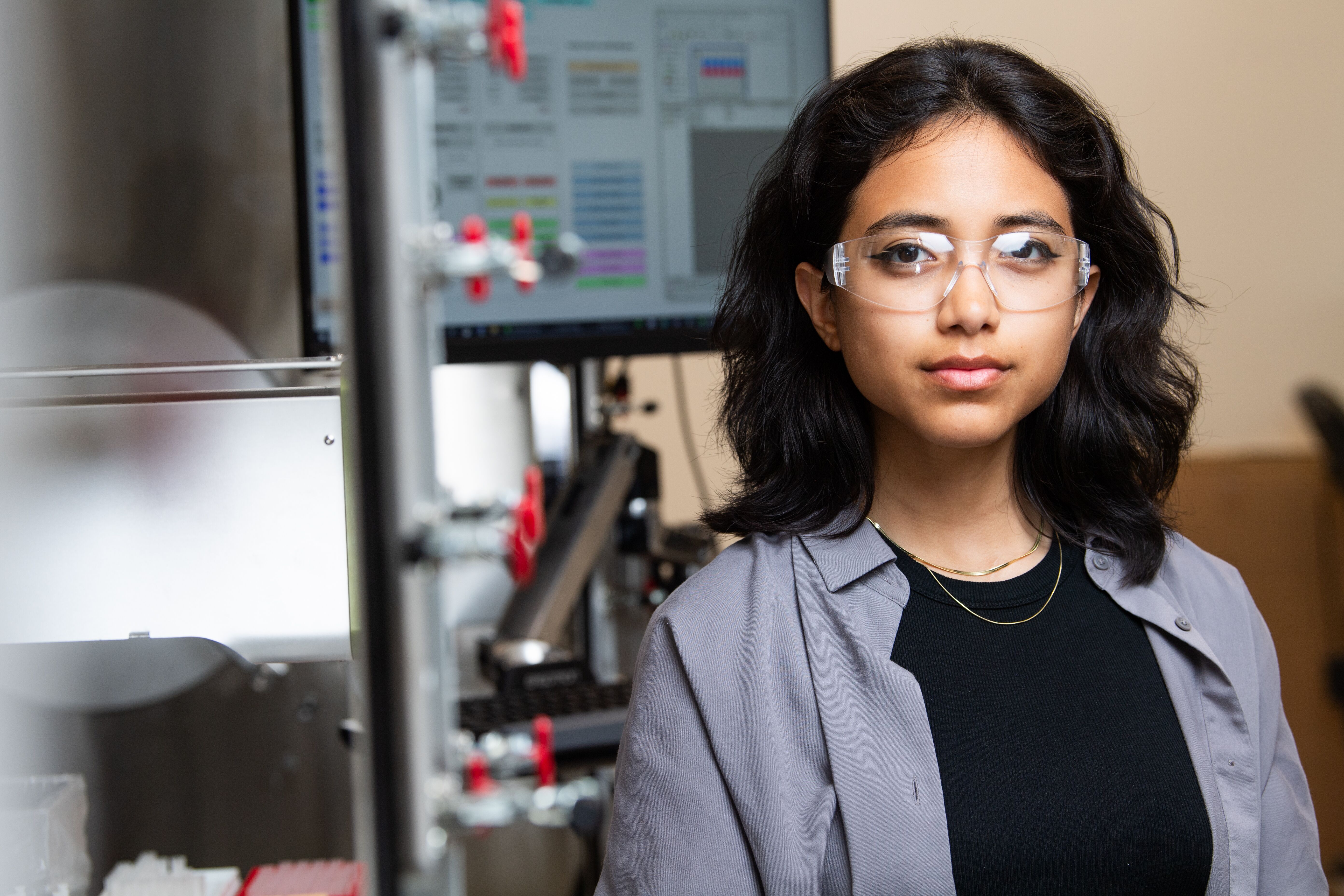More than 1,700 PNNL Interns Help to Advance Science and Technology

Ricardo Sandoval is transferring from a community college to San Diego State University to pursue electrical engineering this fall. During his internship, he worked with researchers at PNNL to develop a new electrolyte for lithium-metal batteries.
(Photo by Andrea Starr | Pacific Northwest National Laboratory)
When it comes to internships, what could be better than helping to make the world a better place? The more than 1,700 interns and research associates at the Department of Energy’s Pacific Northwest National Laboratory this year are doing just that by working on projects to advance scientific research and accelerate technology development across many areas.
For example, biochemistry major Grace Robinson worked on a multidisciplinary project this summer that leveraged expertise in chemistry, microbiology and plant science to optimize crop growth for plants such as sorghum that are used to produce biofuel. The senior at Whitworth University focused on organic compounds released by plant roots into the soil known as root exudates. Specifically, she sought to identify the chemical structures of specialized molecules in root exudates from sorghum that might act as a natural herbicide or nutrient.
Grace first isolated these molecules and then used analytic chemistry techniques to study them. She sought to identify which proteins or enzymes are active when the molecules break down and how they interact with microbes in the soil. Eventually, this information could be used to optimize those interactions to increase biofuel crop yields.
While Grace worked on improving the efficiency of plant production, second-year PhD candidate Alysson Bermudez focused on increasing the speed and efficiency of analyzing battery materials. She applied her expertise in chemistry and experience with scientific instrumentation to help set up a robot called J-KEM in the automated robotics lab in the recently opened Grid Storage Launchpad.
Alysson spent her days organizing equipment, training the robot, writing code and making 3D-printed parts to enable researchers to set up their experiments safely and easily. J-KEM will complement the automated materials synthesis performed by two other robots, Archer and Beverly, by removing the bottleneck of waiting for humans to analyze the intermediate results.

When fully operational, J-KEM will quickly analyze large batches of material samples, looking at three specific measurements that may indicate a material’s potential for improving battery performance.
Alysson is headed back to the University at Buffalo, but her work this summer will help scientists automate experiments to more quickly identify materials that may warrant additional exploration.
Another talented intern, Ricardo Sandoval, also contributed to energy storage research. The electrical engineering major, who is beginning his junior year at San Diego State University, helped overcome a technical challenge that hinders the performance of lithium-metal batteries. Although these batteries are an attractive, lighter-weight alternative to the more common lithium-ion batteries that use graphite or silicon, they can form internal “branches” that can cause the battery to short circuit and catch fire.
Ricardo worked with PNNL researchers to develop a protective layer that will allow the battery to function while preventing these lithium branches, called dendrites, from growing. He assembled coin-sized battery cells with different formulations of a promising material and then tested their effectiveness.
Because lithium-metal batteries offer the promise of significantly increased range for electric vehicles, the test batteries underwent representative fast charging and discharging cycles. Ricardo then looked at how much capacity was lost during the process to determine how long the batteries would last. Building on these early tests, researchers will do more extensive testing on the materials that performed best.
Nelson Mandela once said, “The youth of today are the leaders of tomorrow.” Grace, Alysson and Ricardo are impressive and inspiring examples of how our interns’ intellect, innovation and enthusiasm will make the world a better place by helping to create a clean energy future that will benefit all of us.
Steven Ashby, director of Pacific Northwest National Laboratory, writes this column monthly. To read previous Director's Columns, please visit our Director's Column Archive.
Published: August 26, 2024